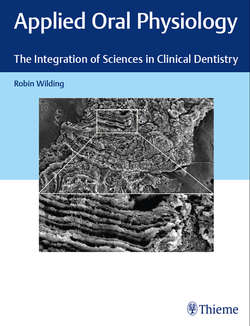Читать книгу Applied Oral Physiology - Robin Wilding - Страница 63
На сайте Литреса книга снята с продажи.
4.1 Introduction
ОглавлениеEcology is the study of the relationship between living organisms and their environment. An ecosystem is a specific environment in which plant and animal species live in an interconnected web of cooperation and competition. For example, a forest is an ecosystem in which trees, bushes, and smaller plants interact with insects, soil bacteria, birds, small mammals, and reptiles, in fact, a large spectrum of most major classes of living organisms. Within the forest, each tree could be seen as a small ecosystem on its own, as it supports a characteristic collection of interactive bacteria and insects. The complexity and stability of an ecosystem take a long time to develop. If a temperate forest were to be cleared to the ground, it is estimated that it would take 200 years to regain its original rich and varied number of species.
The oral cavity is an ecosystem on a smaller scale, which also requires time to acquire a mature ecological balance of organisms. The time is much shorter than that needed for a forest to mature, as the life cycle of bacteria is faster than trees, and there are only 500 or so species or bacteria in the mouth. However, it still takes 2 weeks before a film of plaque bacteria has reached maturity. The organisms which have established themselves in an ecosystem are those which have been able to adapt to the physical environment and to the other species in the ecosystem.
Not all the members on an ecosystem are of equal importance to its survival. Some, called keystone species, have a decisive influence even when they may represent a small proportion of the total numbers of organisms in the ecosystem. Keystone species determine the composition of the ecosystem and control the relative numbers of each species. An example of a keystone species is the sea otter. On the Western coast of North America, the otter keeps down the population of sea urchins which graze on the base of kelp. Without the sea otter the urchins would devour the kelp and destroy the entire ecosystem of the kelp beds.
There are keystone species in communities of bacteria, occurring in the gut and oral cavity, which communicate with their microbial community, via chemical messages, a communication which microbiologists have called cross-talk or quorum sensing. The chemical messages induce control of gene expression in the target organism. Communication between bacterial species is also observed in the spread of antibiotic resistance. Genes from bacteria which confer resistance to antibiotics are able to be shared with other species of bacteria.
Stability is a feature of successful ecosystems, and it is dependent on maintaining a balance in the hierarchy of member species of the system. This balance is maintained partly by the stability of the physical environment such as the availability of light, oxygen, and nutrients, but it is also dependent on the population control of each species. This control is achieved through processes of competition for resources and cooperation between species in maintaining a balanced and stable population.
The relationship between different species is not always competitive. In fact, cooperative partnerships are more significant in nature than competitive ones. In the long term (evolutionary length), competition for survival has not been the best strategy, as 99% of all the species that have ever lived are now extinct. However, there are some remarkable examples of cooperation which have lasted 3 billion years. The relationship between mitochondria and all nucleated animal cells started off as a host–parasite relationship. The cell gave shelter to the mitochondria which were able to use oxygen to produce high-energy molecules and thus could be a great benefit to an active cell. The partnership was so successful that it led to the evolution of the eukaryote cell, with nucleus, mitochondria, and cilia. The eukaryote cells enabled an unprecedented surge in evolution of multicellular forms of life. The mitochondria have retained their genetic identity over the millions of years of this partnership and their separate process of reproduction through the female lines of organisms. The relationship is still recognizable as a form of symbiosis, the living together of different organisms. There are many other examples of symbiotic relationships, which, as they are better understood, indicate that they are of significant importance. A close and highly interdependent relationship between bacteria is found in a biofilm. This is a dense aggregate of many species which have abandoned a solitary planktonic life for the benefits of a cooperative community existence.
